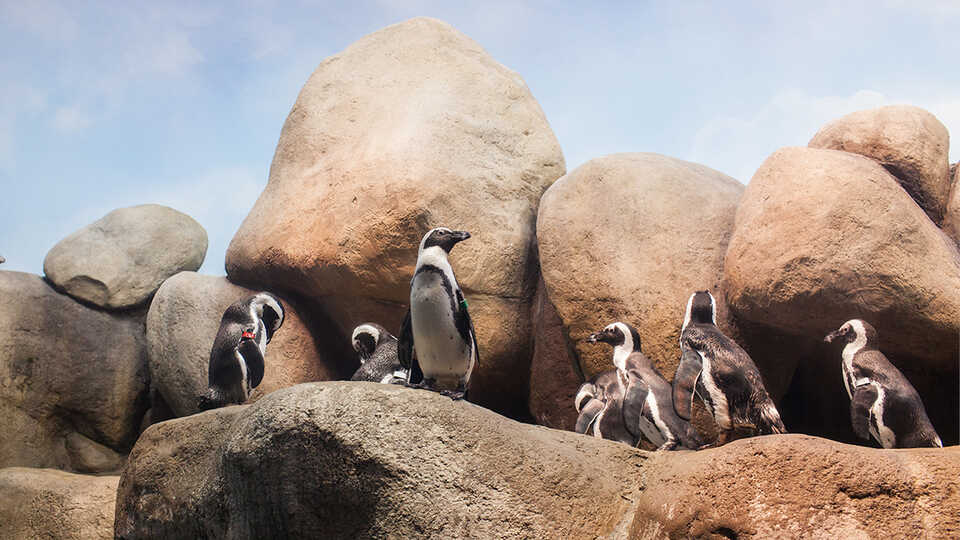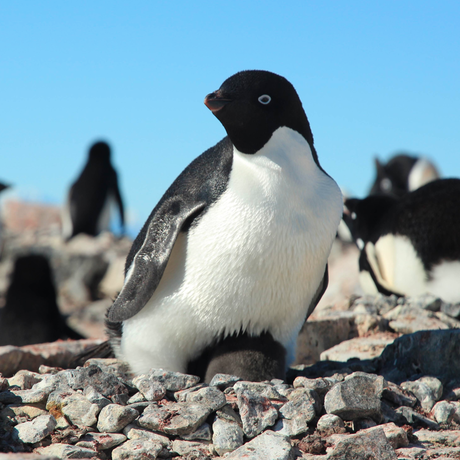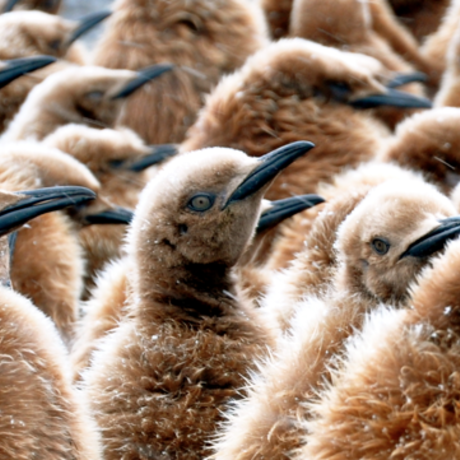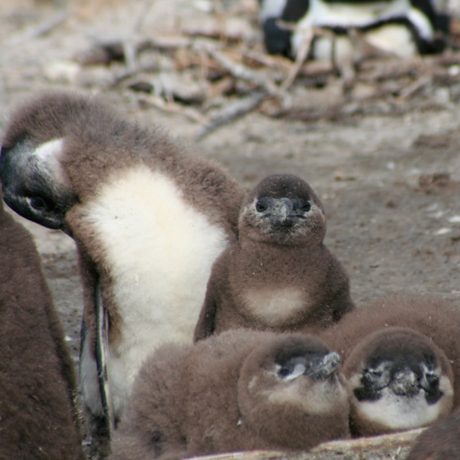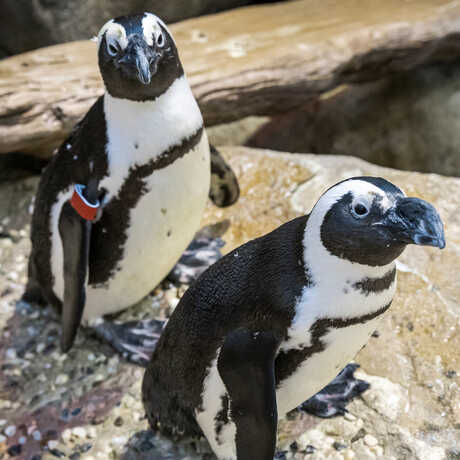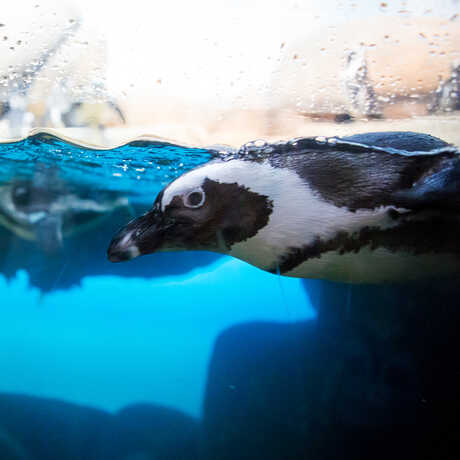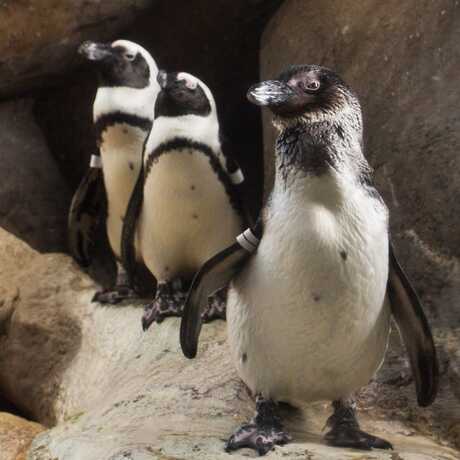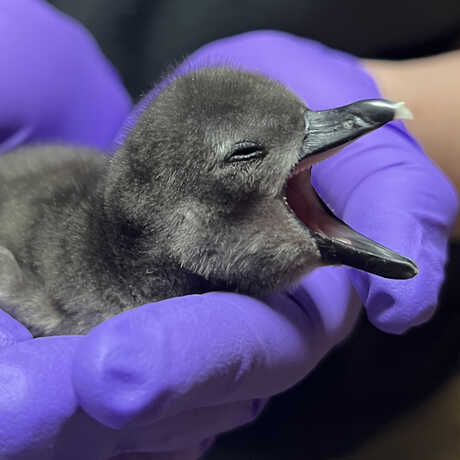The Penguin Islands, a stretch of rocky outcroppings off the coast of Namibia once considered valuable for their guano deposits, get their name (and, er, their guano) from Spheniscus demersus—the only species of penguin to breed in Africa. Today, African penguins are at serious risk of extinction; the Academy's Species Survival Plan colony is one of the ways researchers and biologists are working to protect them.
Like all penguins, African penguins do not fly; their wings, flat and stiff, function as flippers, allowing them to dive to nearly 200 feet in pursuit of fish and squid. And because African penguins can slow their heart rate, they can remain underwater for more than two minutes at a time.
Their coats, which feature a pattern unique to each penguin (like human fingerprints), are maintained by a constant process of preening. During preening, penguins use their beaks to apply oil from a gland at the base of their tails, distributing a waxy sheen over their feathers.
African penguins hew to a set of behaviors that will seem familiar to humans, such as establishing strong pair bonds and clear social hierarchies, and using lively, complex communication. In the mainland colonies they’ve established near Cape Town and Namibia, they even interact with humans from only a few feet away.
